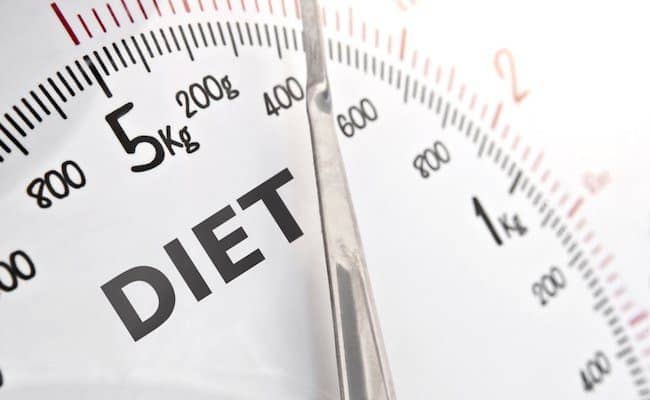
The recommended calorie intake for one meal depends on your daily calorie goal. If your goal is 1,500 calories per day, try aiming for about 500 calories at meal times. If you want to include snacks throughout the day, aiming for 350-400 calories at meal times will meet your total calorie goal.
Your total calorie intake is not the only thing can impact health and weight regulation. When you eat can also play an important role. Everyone’s nutrition needs and calorie requirements are different, but there are some general guidelines for how much you should eat at each meal.
Spreading out your calories equally throughout the day is often encouraged. For example, if you are aiming for 1,500 calories per day, you may want to eat three meals that provide about 500 calories each.
If you want to include snacks, you may want to aim for less than 500 calories at meals. Remember, there are 3500 calories in a pound of fat.
Some research has also shown eating more calories for breakfast and fewer calories for dinner may be beneficial for weight loss without changing your total calorie intake for the day.
What is also important to focus on besides how many calories you are eating at each meal is what nutrients you are getting.
A meal of processed, packaged foods that provides 500 calories will have a different impact on the body than a meal with 500 calories from nutrient dense lean proteins, heart healthy fats, fruits, vegetables and whole grains.
How many calories do you need per day?
Having a general guideline for your calorie goals per day can give you clarity for what to aim for calories at each meal.
If your goal is 1,500 calories per day, try aiming for about 500 calories at meal times. If you want to include snacks throughout the day, aiming for 350-400 calories at meal times will meet your total calorie goal.
What does this look like? An example 1,500 calorie meal plan could include the following meals for a 1,500 calorie per day.
Breakfast: Avocado and arugula
Snack: A cut up apple with a dash of cinnamon
Lunch: Roasted veggie jar salad
Snack: Cucumber and carrot slices with hummus
Dinner: Zucchini noodle pasta with shrimp and avocado pesto with a side salad.
This meal plan provides about 1,500 calories for the day assuming you are following the portion sizes and recipes.
If your calorie needs are higher, you can eat larger portions, eat more snacks or add foods to meals.
Working with a dietitian can help you determine an appropriate daily and meal calorie goal.
Why you should be eating a bigger breakfast
An alternative to splitting your calories up equally at meal times is eating a larger breakfast and smaller dinner without changing your overall calorie intake.
Research suggests making this simple switch could be advantageous for weight loss and other health measures.
A 2013 study (1) put overweight or obese women onto a 1,400 calorie diet.
One group had 700 calories at breakfast, 500 calories at lunch and 200 calories at dinner. The other group had 200 calories at breakfast, 500 calories at lunch and 700 calories for dinner.
At the end of 12 weeks, the group with the higher calorie breakfast had greater weight loss, waist circumference reduction and lower triglycerides compared to the group that had a higher calorie dinner.
The group in the higher calorie breakfast also had higher levels of satiety compared to the other group.
This study suggests while following a low calorie diet, eating a higher calorie breakfast with a smaller dinner was beneficial for weight loss.
If you are trying to lose weight, you may want to try eating a more calories for breakfast and a lighter dinner.
This doesn’t mean you can eat whatever you want for breakfast; it should consist of healthy, nutrient dense choices with over all calories still meeting your target.
A January 2017 statement (2) from the American Heart Association also suggests eating more calories earlier in the day may be beneficial for lowering risk for cardiovascular disease.
Skipping breakfast is not recommended, as some research suggests eating breakfast is associated with fewer risk factors for cardiovascular disease. People who skip breakfast are more likely to be obese and may have an increased risk for type 2 diabetes.
Make sure your breakfast is healthy by including sources of fiber, protein and heart healthy fats. Avoid the typical Western breakfast of sugary cereal, a bagel or baked good.
What should you eat at each meal?
When planning what you are eating for the day, it’s important to focus more than on the calorie content. Calories are only one aspect of how food impacts the body.
The quality of your food calories makes a big difference. Therefore, keep these tips in mind while factoring how many calories to eat at each meal.
Make half your plate filled with fruits and vegetables. This is a recommendation from the USDA, but unfortunately most Americans do not eat the recommended amount of daily fruits and vegetables. Eating more fruits and vegetables means you are eating a larger volume of food which helps keep you full. They also provide a rich array of antioxidants, vitamins, minerals and fiber.
Watch what you drink. Liquid calories can be a source of empty calories and can quickly increase your calories you get at a meal. Avoid sugary drinks and prefer low calorie alcoholic drinks. Aim to drink water or unsweetened tea with your meals.
Get a mix of fiber, protein and heart healthy fats at meals. Besides total calories, you should aim to get a mix of macronutrients. Protein, fiber and fats can provide satiety after your meal.
When you eat a meal that is primarily simple carbohydrates, you can feel hungry again soon after eating.
Lean proteins include: white meat, lean red meat, eggs, dairy, legumes, soy, hemp seeds and chia seeds.
Heart healthy fats can include: olive oil, nuts and avocado.
Fiber sources can include: fruits, vegetables, whole grains and legumes.
Creating meals that are a mix of these nutrients can ensure you are getting a nutrient dense, satisfying meal.










